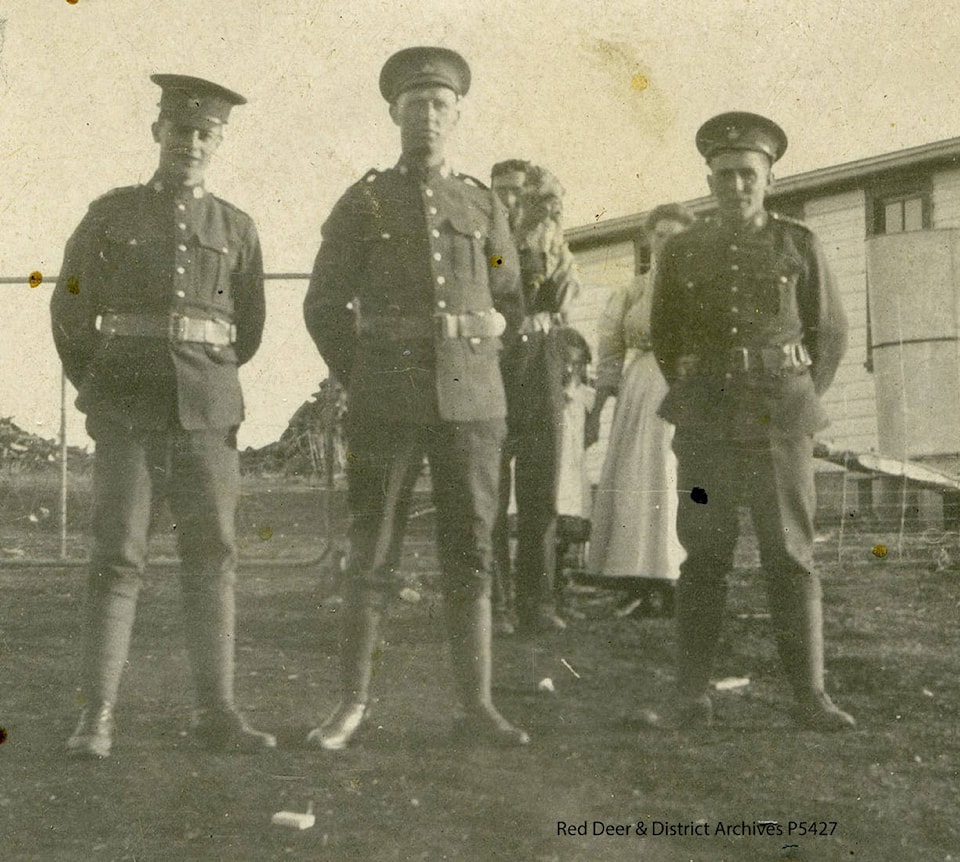Red Deer and area has a deep and honoured connection to one of the most famous battles of the First World War — Vimy Ridge.
Sunday will mark the 100th anniversary of the battle in northern France that is now seen as a nation builder when all four divisions of the Canadian military fought together for the first time, pushing back the Germans, and surprising doubters who thought the Canadians couldn’t get the job done.
They did, at great sacrifice. There were 3,598 Canadians killed at Vimy Ridge, and many thousands of others wounded.
Michael Dawe, archives specialist with the City of Red Deer, had an great uncle and his own grandfather involved with Vimy. His great uncle, Sam Hodgkinson, was a stretcher barrier on the day the battle began. His grandfather, John Hodgkinson, was a machine gunner who arrived after the battle as part of the reinforcements. Both did eventually make it home.
Dawe went to see the Canadian National Vimy Memorial in France three years ago. “I’m really glad that I went. … It is a very moving experience.”
Hundreds of young men from the Red Deer area enlisted and fought in First World War, and many fought at Vimy Ridge. With them come many stories.
Dawe said three young farm men from the Hill End district east of Red Deer joined the 89th Battalion together in December 1915. All three — Walter Gowans, Sidney Songhurst and Joseph Snider — were killed in the assault on Vimy Ridge on the morning of April 9, 1917. It was the 89th Battalion that took the brunt of the fighting at Vimy.
Horace Meeres and his oldest son Raymond were wounded at Vimy. His younger son Ted was part of the reinforcements.
Will Richards, also from the area, was killed at Vimy after surviving the Battle of the Somme earlier. His younger brother, John Richards, was wounded, and initially was reported as missing but he was found alive a few days later on the battlefield.
Twelve soldiers from the Red Deer area were killed on April 9, Dawe said. Probably another 100 to 150 men from the area were wounded. As fighting in France continued along the line over another few weeks, 18 more local men were killed.
The Red Deer Cenotaph contains the names of local soldiers killed during the First World War. The names of 116 are on a sheepskin scroll, in a tube inserted in the base of the Cenotaph. Unfortunately, two were left of the list, as there were actually 118 local men who died in the war.
Red Deer had one of the higher enlistment rates in the First World War, Dawe said, and therefore one of the higher casualty rates.
“If you think of a town of about 2,800, with maybe another 3,000 in the rural area, when you lose 118 young men that’s a pretty big chunk of your community.”
The main reason Canada is commemorating Vimy is because it is generally considered the biggest Canadian victory of the First World War, Dawe said. A special celebration will be held in downtown Red Deer on Sunday.
“A lot of people said that the modern nation of Canada was formed that day, but what we need to remember is it was a very expensive achievement, because you had 10,600 casualties, 3,600 killed, and a lot of other people came back missing an arm, leg, eye, or a mind.”
The old Alberta Ladies College, which was later the Michener Centre administration building, and now is used by Alberta Health Services administration, was turned into a hospital in 1916 for what they called then “shell shocked veterans”, which today is known as PTSD (post-traumatic stress disorder), Dawe said.
”There were so many in this community and surrounding areas that the government had to create a special hospital for them.”
